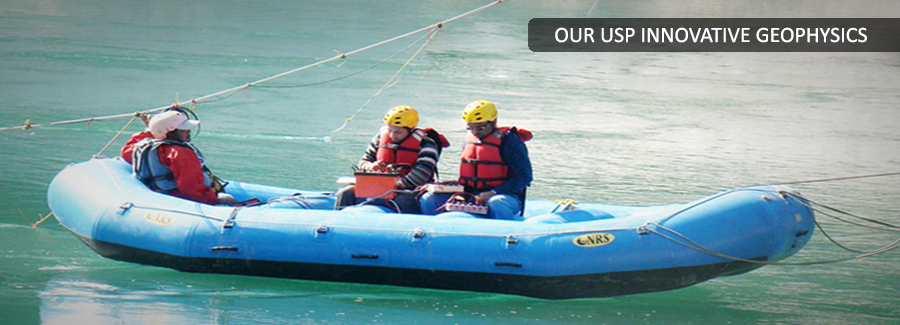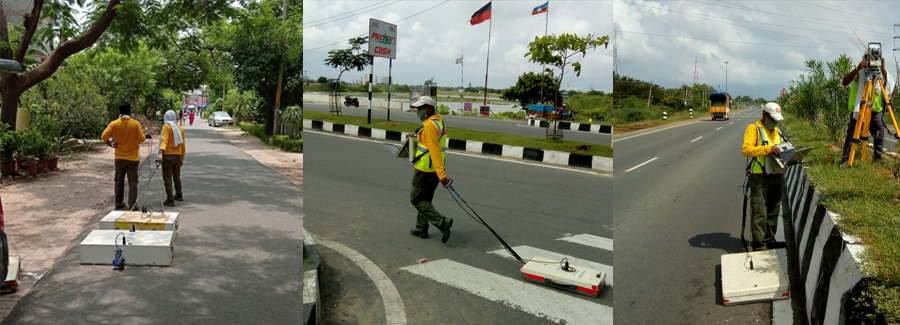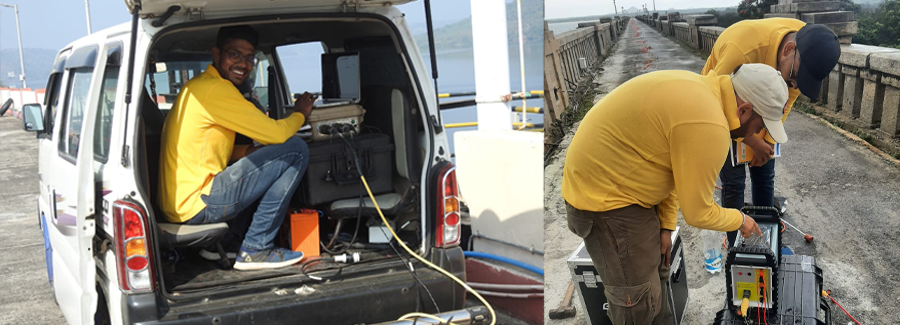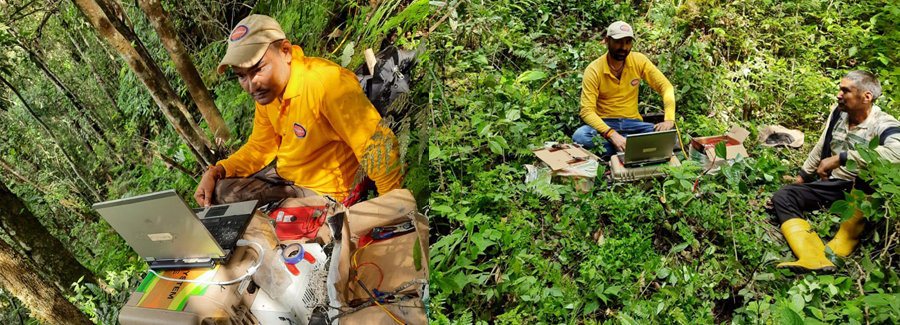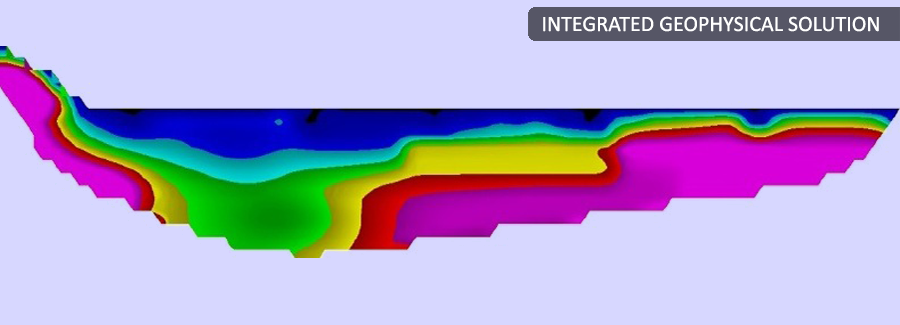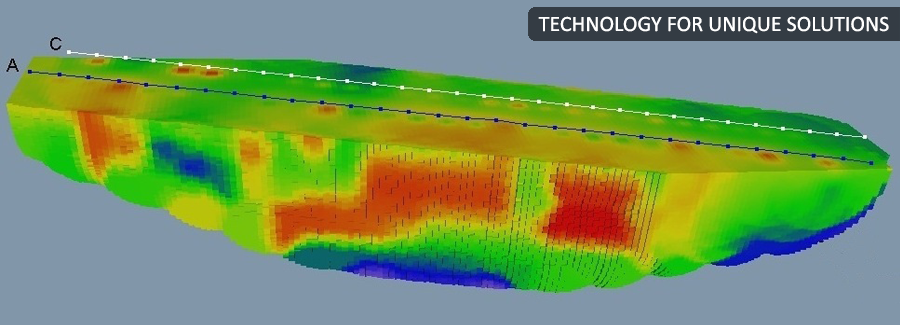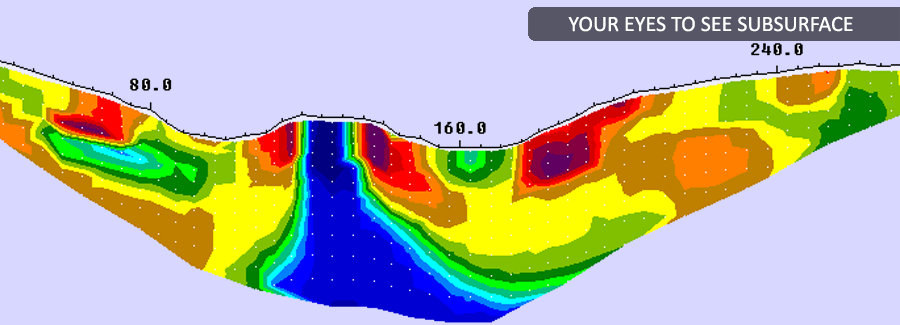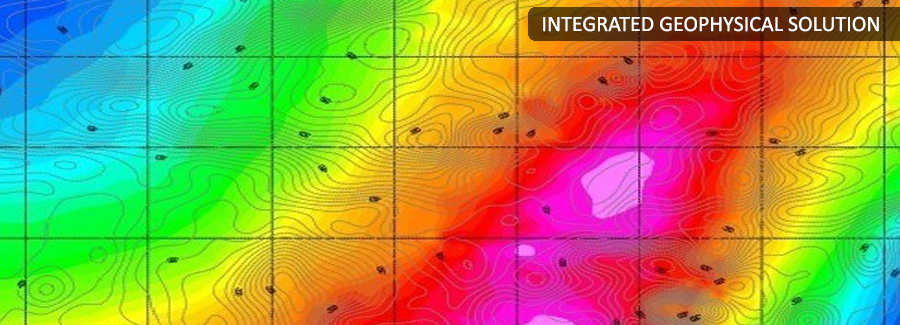PARSAN- Geophysics Service Providers in India, Singapore, Kingdom of Saudi Arabia and Bahrain!
Non-invasive Subsurface Investigation Specialists
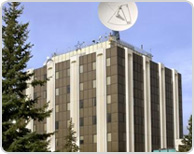
PARSAN, an ISO 9001-2015 company, is established as a pioneer in applied near-surface geophysics in India, providing Contracting and Consulting services to clients from the Geotechnical, Civil Engineering, Mineral, Hydrological and Environmental industries. With offices now in the Kingdom of Saudi Arabia, Kingdom of Bahrain, and Singapore, PARSAN continues to expand its reach and deliver high-quality solutions globally. The company owns the largest range of near-surface geophysical survey equipment in Indian private sector and continues to expand its resources to advance their geophysical survey capability.
What inspires our specialists is the idea of providing all of our clients with the widest range of solutions adapted to their needs in order to deliver the best data available in today's market.
It’s an established fact that a single geophysical technique can’t provide a unique solution to subsurface problems. PARSAN has a wide range of geophysical tools at its disposal, and vast experience to suggest its clients the right combination of tools to be used to address to subsurface investigation challenges. PARSAN strives to use technology for providing unique solution.
PARSAN has work experience in India, Singapore, Oman, Afghanistan, Bahrain, Kuwait, Kingdom of Saudi Arabia, Bhutan, Bangladesh and Nepal. The company has Offices in Delhi, Kolkata, Bahrain, Kingdom of Saudi Arabia, Egypt (agent) & Sudan (agent).
This site will guide you through PARSAN’s wide expertise and will allow you to explore the capabilities of our company. The company came into existence in October 2001. Founder director Dr Sanjay Rana had vast experience of geophysical Industry, and was determined to concentrate on innovation and quality. From the beginning, PARSAN contributed towards the development of high profile infrastructure projects in India and abroad, such as the hydroelectric projects at Lower Subansiri, Alaknanda, Chango etc.; Nuclear power plants at Kudankulam, Kalpakkam and Tarapur; Thermal power plants at Yamuna Nagar, Corba; Metro projects at Mumbai & Delhi; Dam Safety investigations at Mullaperiyar; Mineral exploration for Atomic Minerals; and Reliance 4G project most recently. Over the years, PARASN has performed hundreds of significant projects around the world, including in tough terrains of Afghanistan (2002 to 2008). The professionals at PARSAN have made a constant effort to improve on existing geophysical methods and to innovate in order to provide clients and partners with a geophysical know-how among the most advanced in the world. At PARSAN, innovation is the key word. Geophysical investigations across flowing rivers, non-destructive investigations of Dams using integrated approach, launch of Passive Seismic Tomography for oil exploration, large scale launch of SUE (subsurface utility engineering) in India, are just a few examples of innovative use of geophysics to solve subsurface puzzles. Mission Since the very beginning PARSAN is committed to offer comprehensive services in applied geophysics and promote the use of geophysics to accelerate and reduce the cost of engineering projects. The founding director Dr. Sanjay Rana has made an important contribution to the development of geophysics in India by demonstrating its success in various engineering, mining, environmental and water resources projects. Company continues to invest heavily in spreading awareness on importance of geophysical investigations to reduce costs of various projects. International Presence PARSAN took up its first assignment for deep aquifer mapping in tough and hostile terrain of Afghanistan in 2002, just after the war got over there. PARSAN has work experience in India, Singapore, Oman, Afghanistan, Bahrain, Kuwait, Kingdom of Saudi Arabia, Bhutan, Bangladesh and Nepal.
With offices strategically located in Bahrain and the Kingdom of Saudi Arabia, PARSAN effectively caters to the Middle East market. Additionally, as a reputable Geophysics company in the Kingdom of Bahrain and one of the foremost Geophysics Service Providers in the Kingdom of Saudi Arabia, PARSAN is committed to delivering top-notch solutions. The company's global outreach extends to Singapore, where it continues to provide cutting-edge Geophysics Services. Agent offices in Egypt and Sudan further contribute to PARSAN's comprehensive and dynamic presence in the field of applied near-surface geophysics.
Frequently Asked Questions
Geophysics therefore reduces random drilling to a large extent thus saving on cost and time.
Latest Videos Just for You


